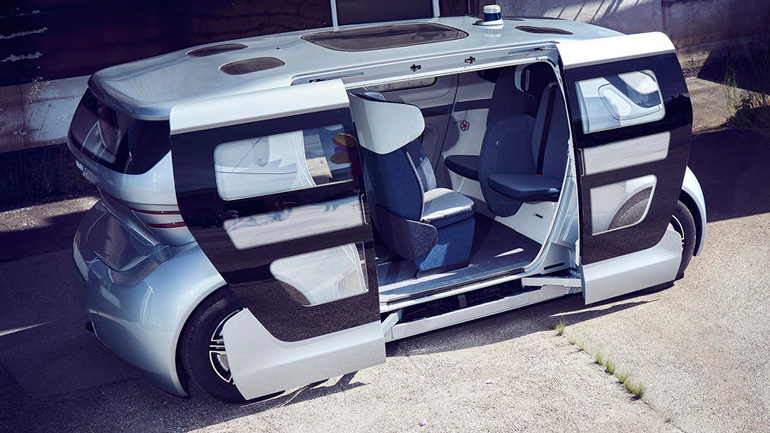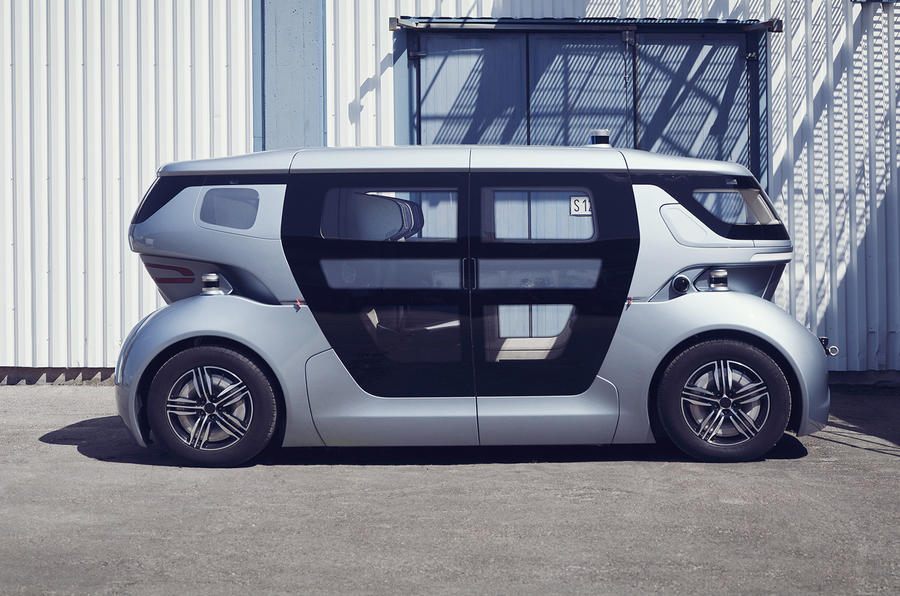National Electric Vehicles Sweden (NEVS), the Swedish electric car manufacturer that purchased the majority of Saab when it went bankrupt in 2012, has introduced an autonomous ride-sharing shuttle named Sango. They plan to test it in real-world conditions. It will allow operators and riders to connect with the shuttle thanks to a system called PONS. Although we do know it’s electric, technical specifications have not yet been released.
Saab filed for bankruptcy in December of 2011 after all production stopped in March of the same year. It famously claimed its cars derived from jets, but the Sango doesn’t look like anything that would be seen on an aircraft carrier. The new vehicles was not designed to be fast and has a more boxy silhouette giving it maximum interior space.
The first running Sango prototypes have already begun testing at NEVS’ headquarters in Trollhättan, Sweden. The company plans to release 10 autonomous shuttles in Stockholm, to be used by members of the general public.

The Sango’s self-driving hardware and software is provided by Chinese technology firm AutoX. However, NEVS made it a point that its shuttle is modular enough to use any autonomous system on the market. This is a wise strategy as Operators will be able to choose whether they want to use their own technology on a basic structure or purchase the turn-key self-driving shuttle.
The shuttle offers three different cabin configurations to choose from: private, social, and family. The six seats found in the cabin can be rotated accordingly giving the passengers privacy walls should they want them. With the added privacy the shuttle’s seating capacity drops to four when the walls are raised. With the current global pandemic, the privacy walls can also serve as virus barriers. In addition, each shuttle will be equipped with individual climate control and ventilation systems with air filters. “We will as well look into other possible actions in order to decrease the spread of COVID-19 or other viruses if needed,” said a spokesperson for the brand.
It is clear there are worlds of differences between the Sango and some Saab models such as the 99, 9-3, and 900. However, the idea of making an electric van isn’t new in Trollhättan. Saabs’s defense and plane-making division developed a short-range, battery-powered mail delivery vehicle in the 1970s. They built two prototypes using bits and pieces from the 99 parts bin and created them from scratch. One of the prototypes odometers read about 7,000 miles suggesting that they were widely tested. Aside from their efforts, the battery powered vehicle ultimately remained in the prototype stage.
Autonomous shuttles are closer to the mainstream than many think according to NEVS. Anna Haupt, the company’s vice president of mobility solutions, said in a statement “Getting from A to B with self-driving electric vehicles is not as far off as perhaps the car industry is implying. The era of one person per car and the era of owning a car are soon things of the past.”

